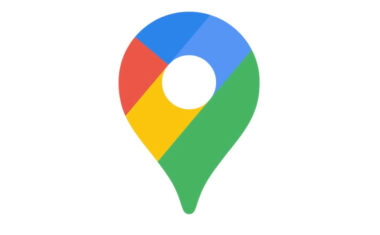10 Popular Python Frameworks Worth Exploring

In this article
With its applications in data science, machine learning, and artificial intelligence, Python is one of the most commonly used programming languages today. And with an intuitive syntax, it’s also one of the easiest programming languages for beginners to learn, making it a logical starting point for many different educational journies.
But learning to code in Python isn’t all about writing code. One of the tools most commonly used by Python programmers is called a framework, which is a tool that programmers use to facilitate the development process. The goal of a framework is to make it easier to program in a specific language or to make it easier to build specific kinds of applications. So you might have one framework that makes rapid development easier while the other provides a solid web application foundation.
Want to know which Python frameworks are worth your time? Then you’re in the right place. Below, we’ll tell you all about the 10 most popular Python frameworks worth exploring and what they’re used for so that you can choose the right one for any project.
What Is a Python Framework?
A Python framework is a tool that provides programmers with a collection of modules, libraries, and other reusable components that help achieve specific programming goals. Python’s frameworks cover many application types, from generic web applications to more niche tasks like database schema migrations and controller modules.
Types of Python Frameworks
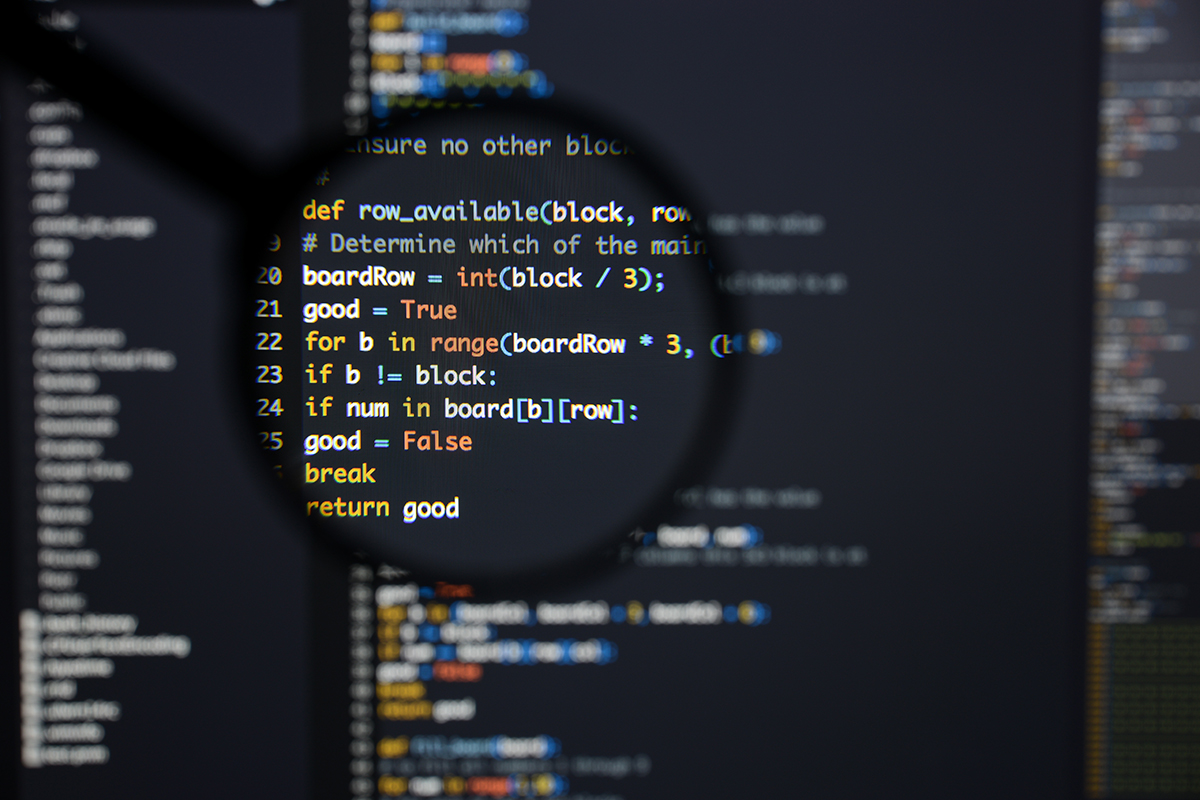
There are three categories of Python frameworks based on the kind of applications they help you build.
Full-Stack Framework
A full-stack Python framework caters to all your needs from a full-stack development perspective. That means you can turn to these development frameworks for all kinds of needs, whether related to front-end development, database creation, or setting up servers for complex applications.
Microframework
A microframework is a lightweight Python framework geared towards very specific or generic application development tasks. That means you won’t necessarily get all the extra bells and whistles, like database abstraction layers, database management functionalities, form generators, or testing tools. The idea is to provide minimalist frameworks that are easy to navigate for those building basic applications.
Asynchronous Framework
Asynchronous frameworks are somewhat new in the world of Python. These frameworks provide the groundwork to build programs that run parallel programming tasks with high concurrency. These are now often a requirement for running high-performance applications.
10 Popular Python Frameworks
Let’s now take a look at the most popular Python frameworks out there. In each case, we will look at key features you need to know about and the kind of applications they’re used to build.
Django
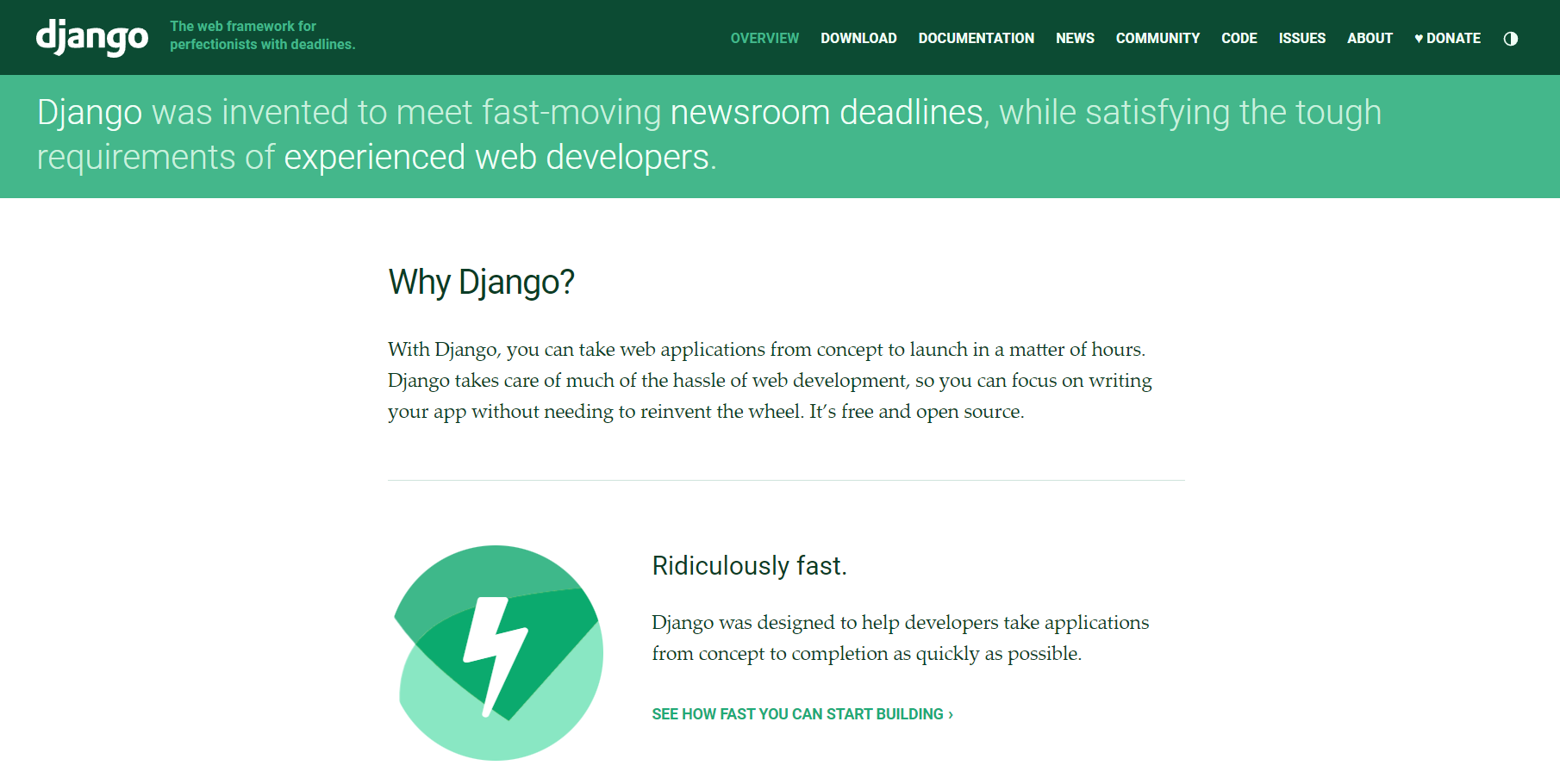
Django describes itself as the Python framework for perfectionists with deadlines. More specifically, it is a great tool for building websites.
One of the cornerstones of Django’s programming philosophy is the Don’t Repeat Yourself (DRY) philosophy. The goal is to make it possible for programmers to write code once and turn them into reusable modules wherever possible. So Django has features to quickly connect databases, build CRUD apps, and login pages.
Features
- Django makes fast-paced development possible, as using Django vastly improves your programming speed. This is thanks to the various modules and libraries at your disposal when you employ the framework.
- Django provides enhanced security. You run the risk of introducing security flaws into your applications when you write your Python programs from scratch. Django contains built-in packages that can identify security issues and they’re always being reviewed and updated by the large community that exists around the tool.
- It is a versatile framework. You can use Django to build just about any application you can imagine. There are currently Django applications out there that run the gamut, from e-commerce to social networks to content management systems.
Applications
Django is used to build:
- Scalable web applications
- Large enterprise and SaaS products
- Content management systems to easily post and update content
Flask
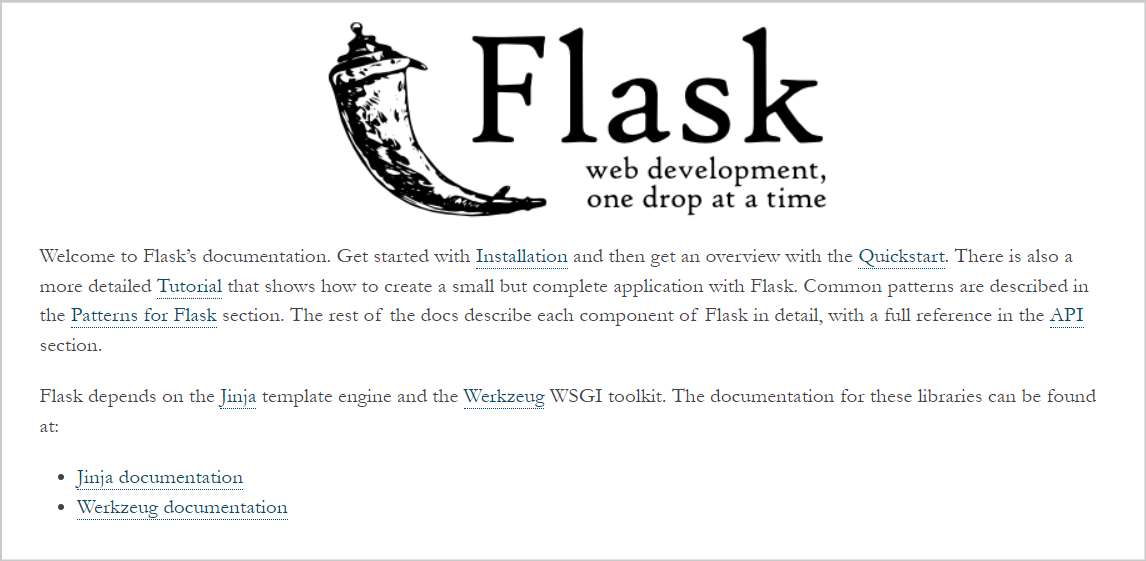
Flask is a web application framework, which means that it makes your job easier if you’re building web apps using Python. It is a microframework that focuses on modules and libraries for high-level app development and doesn’t provide features such as an Object Relational Manager.
Flask was built on the Web Server Gateway Interface (WSGI). WSGI serves as a shared interface for building web servers and apps. It also uses the jinja2 template engine for dynamically rendering web pages from a data source.
Features
- Flask has a built-in development server with a code editor and debugger.
- It offers built-in support for unit testing. That means that you can go about the testing process more easily and build iterations of your application through a faster process.
- Flask has a modular design that simplifies the process of fashioning the framework into the application that you’ve envisioned. The framework is lightweight and easy to work with if you’re building basic web applications.
Applications
- Flask can be used to build web applications of any kind
- Apps like Zillow, Pinterest, and Patreon have been built with the Flask framework
aiohttp
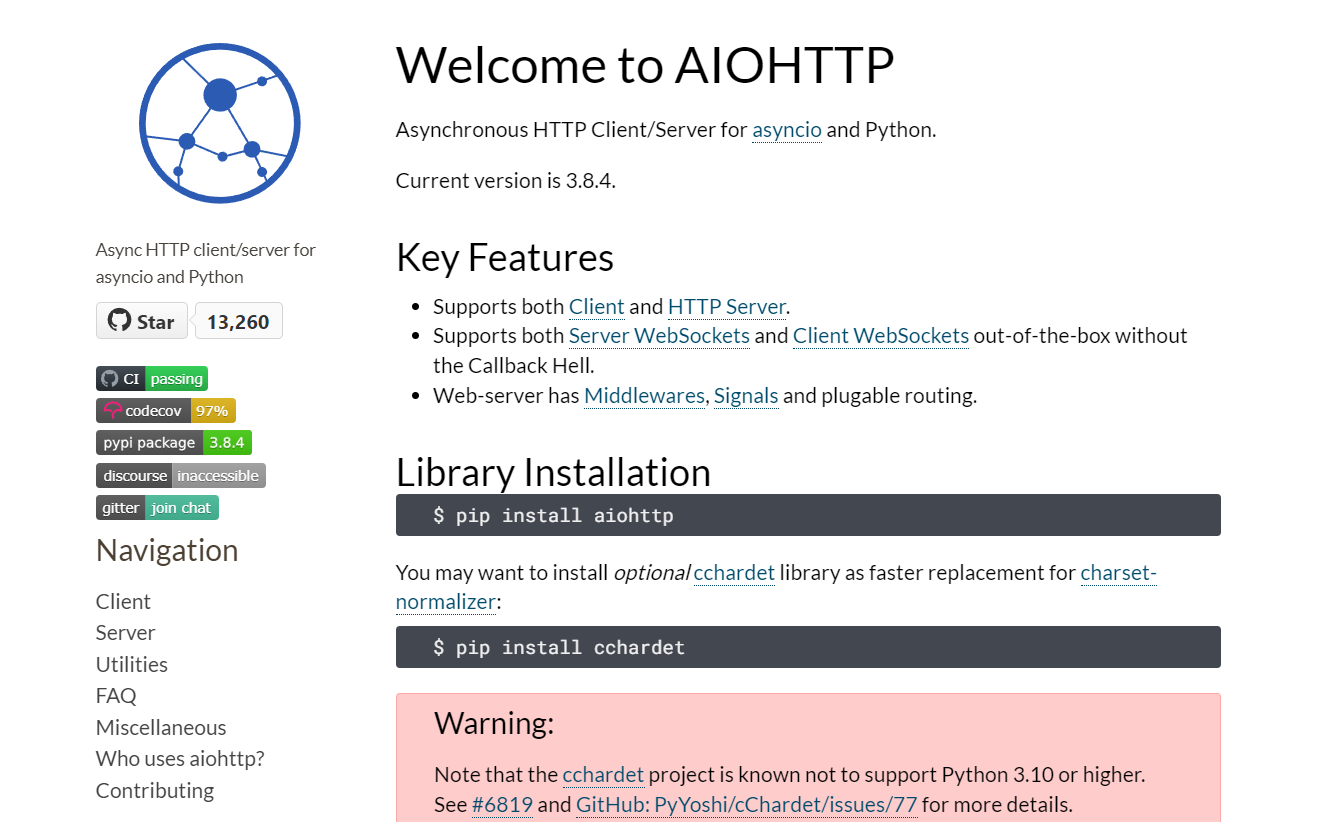
aiohttp is a framework that is used to build asynchronous applications in Python. It takes advantage of the new built-in asynchronous features in Python to make it possible to build high-speed applications.
Features
- You can build both HTTP and client servers using aiohttp. That means that any server-related work is centralized in the framework and becomes a lot easier to handle.
- There are WebSockets in aiohttp for both the server and client. This makes it easy to write code pertaining to WebSockets without nesting callbacks unnecessarily.
- It fully supports asynchronous programming, which is a way to write snappy and responsive programs even if there are threads that run for long periods.
Applications
- An asynchronous web driver called Arsenic is built on aiohttp.
- Pulp, a tool to carry out various operations on software packages, was built using the aiohttp framework.
- aiohttp has also been used to build consumer applications. Home Assistant is one such example. It is an open-source software that can be used with home automation devices issued by hundreds of different brands.
CherryPy
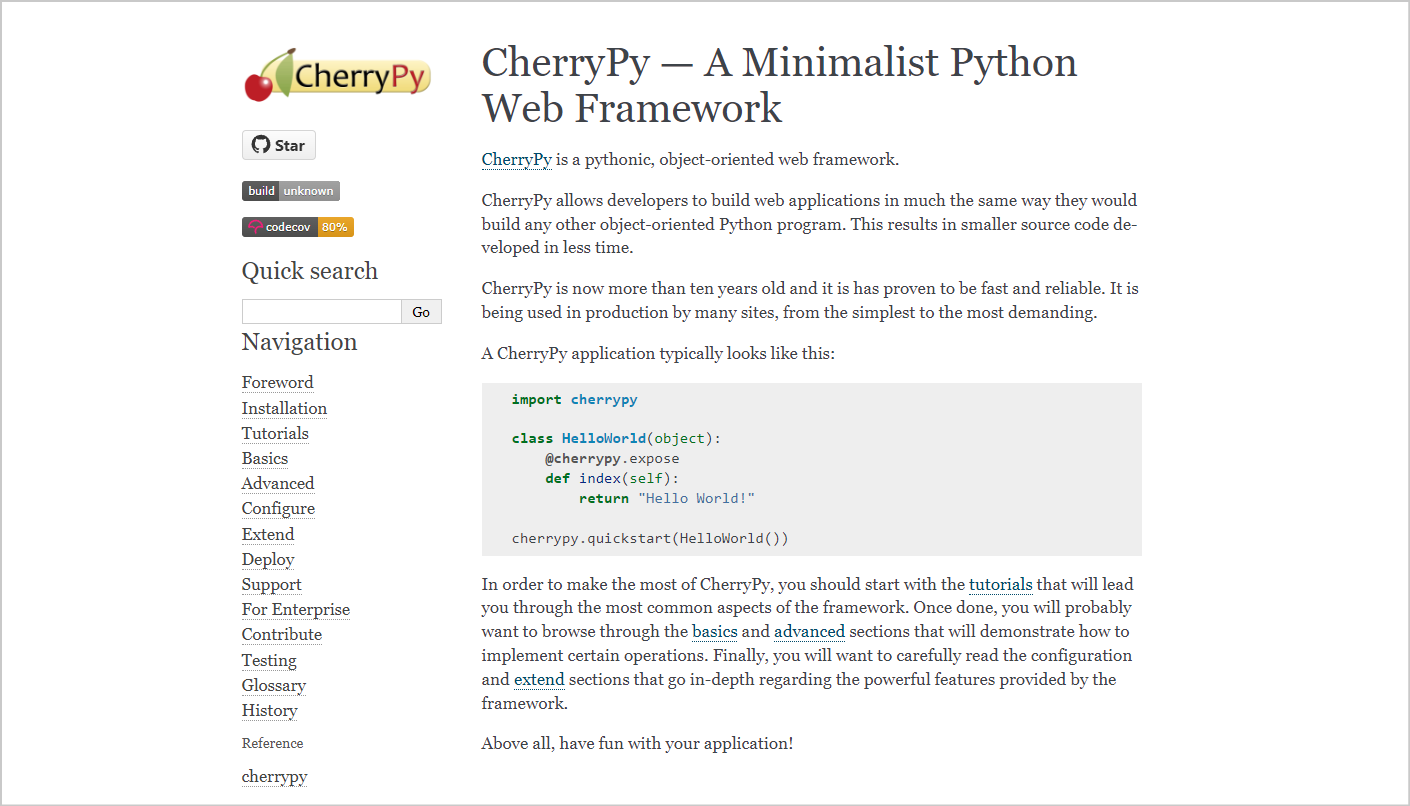
CherryPy is a Python framework that provides a whole range of libraries to speed up web development. The first version of CherryPy was released in 2002, making it one of the oldest Python frameworks.
CherryPy is especially popular among developers who work on applications with a strong database component. This is because the framework supports CRUD functionalities and simplifies the process of building and maintaining databases for web apps.
Features
- CerryPy uses object-oriented programming principles, which is an approach that programmers are usually familiar with from working with OOPS-based languages.
- CherryPy is highly modifiable thanks to the object-oriented approach. You can easily make changes within a class without breaking things that relate to other parts of the program.
- This Python framework is modular. Every object you create in CherryPy acts as an individual entity whose functioning is unrelated to other objects in the program. This makes it easier to reuse components and build new features efficiently.
Applications
- CherryPy is widely used by programmers who enjoy taking the object-oriented programming approach to building web applications.
- You can view an exhaustive list of web apps in the United States built using CherryPy here.
web2py
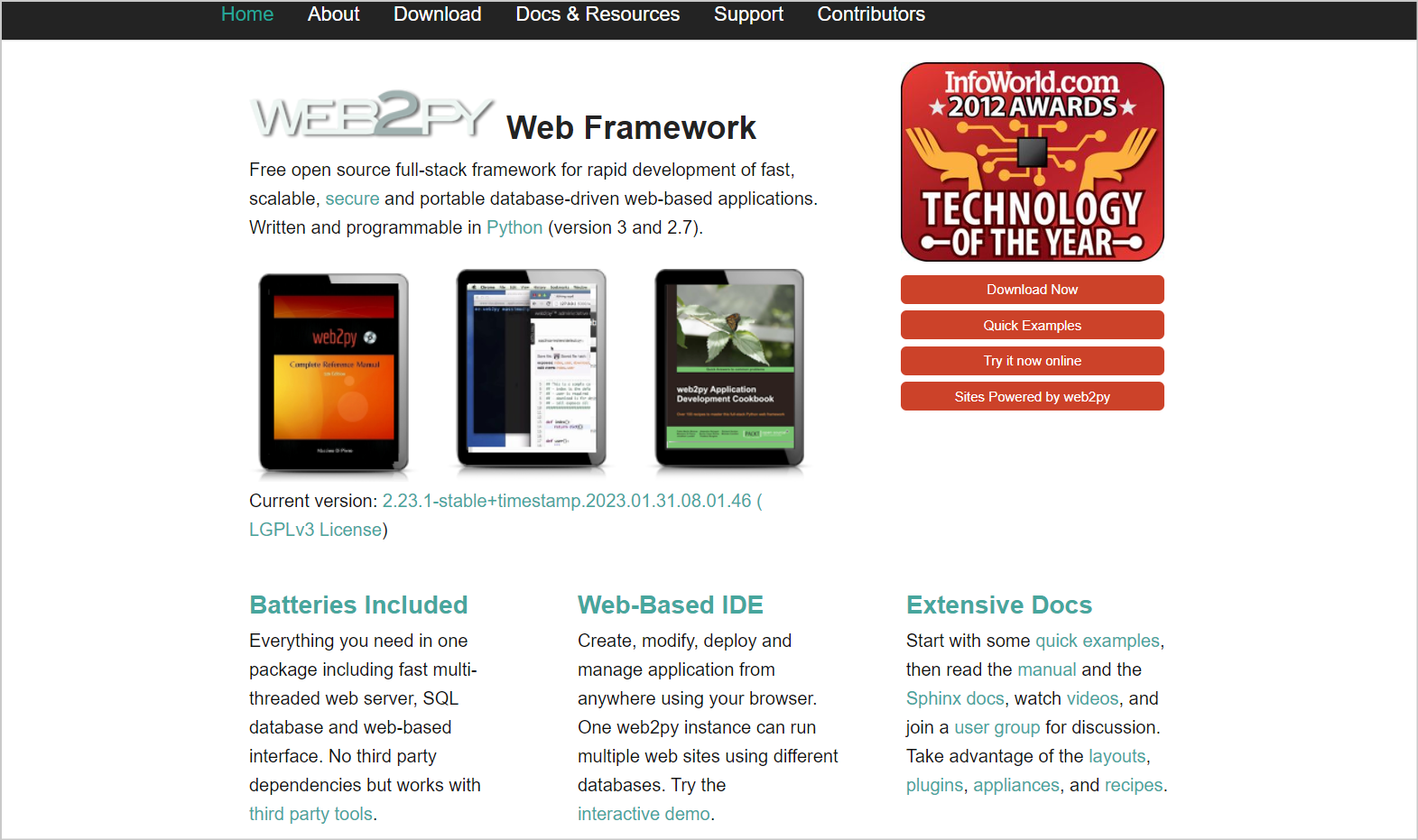
web2py is a free and open-source Python framework. It is generally used for database-driven applications and supports agile development practices.
web2py is well-known because of how easy it is to use. You don’t even need to configure the framework, and running it off a USB drive or other external device is possible. More experienced Python programmers sometimes turn to the framework because it still supports older programming language versions that other frameworks don’t.
Features
- web2py doesn’t require you to do any installations or configurations. The framework can be used easily, and you can start working with it right out of the box. This makes it a framework that’s friendly to beginners.
- The framework uses a top-down design approach, making it highly stable. You don’t have to worry about outages or performance issues while working with web2py.
- web2py is proactive in identifying and flagging security flaws in programs. Its security protocols are based on the OWASP standard.
Applications
- web2py is a great framework to use if you’re building database-driven web applications.
- You can view examples of applications built using the web2py framework here.
Hug
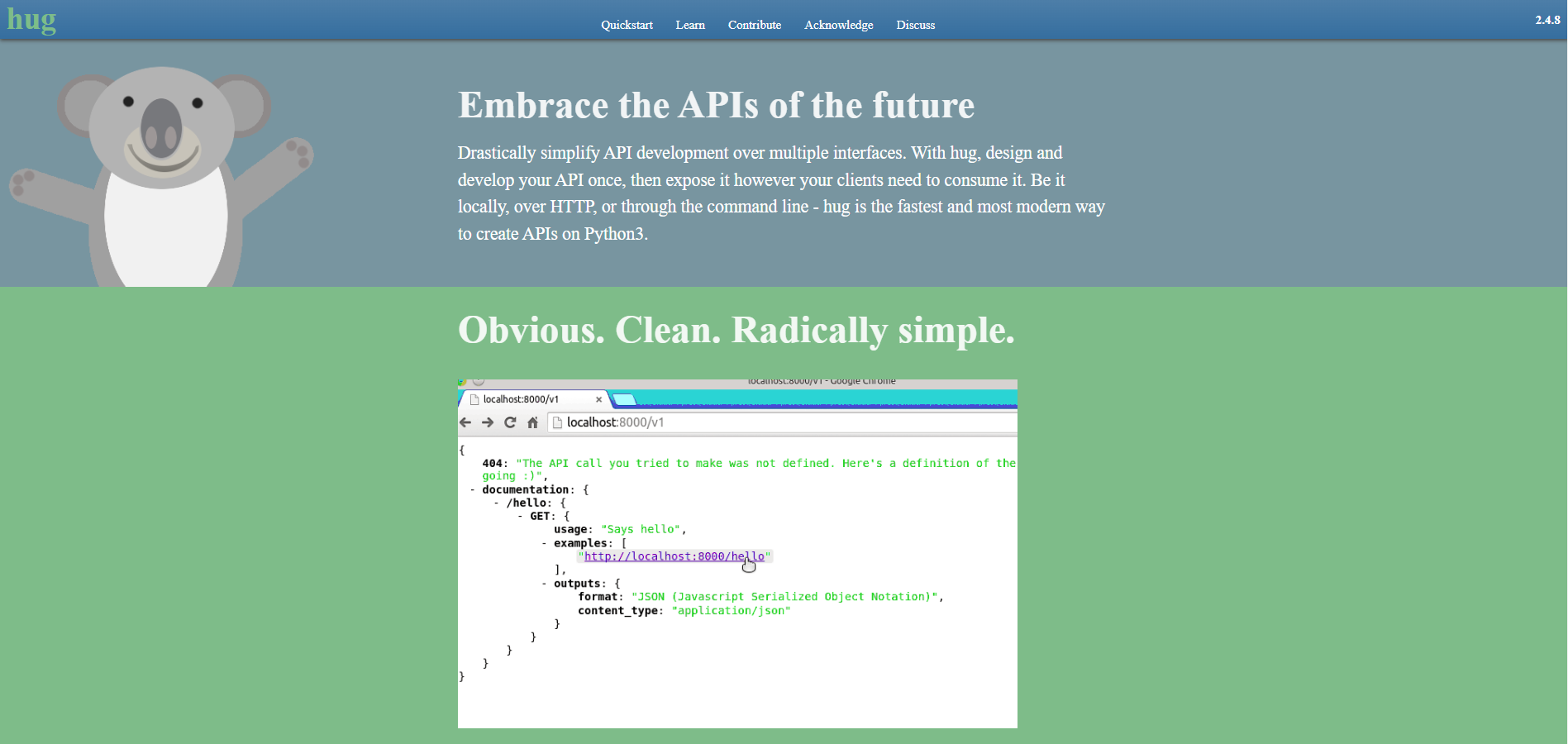
Every software engineer knows how great it feels to find a data source API you’ve been looking for. Even better is when you build an API so that other engineers can connect software components and source data easily. That’s exactly what you can do with Hug.
Hug is a framework written in Python 3 that makes it simple to build your own APIs. It is a microframework, thanks to which the tool is low on code and easy to integrate. But that also means it doesn’t have an in-built database system, which you’ll have to integrate from a third-party source.
Features
- Hug is always an incredible performer on benchmarking tests. The framework is well-known for consuming resources parsimoniously and always being fast. This makes it really great to work with, and the framework itself never gets in the way of your development process, which can happen if you’re working with bulkier frameworks.
- Version management is built into the Hug environment. Developers can easily specify which endpoints pertain to which version of your API. All of that information is communicated to users automatically.
- Hug also generates documentation for your API automatically. You can include guiding information for users with annotations and doc strings. The framework takes these pieces of text and generates documentation for API users.
Applications
- You can use Hug to build snappy APIs that collate data and act as conduits between different software components.
- Hug supports asynchronous features, which means that you can build APIs that have multithreading features.
Bottle
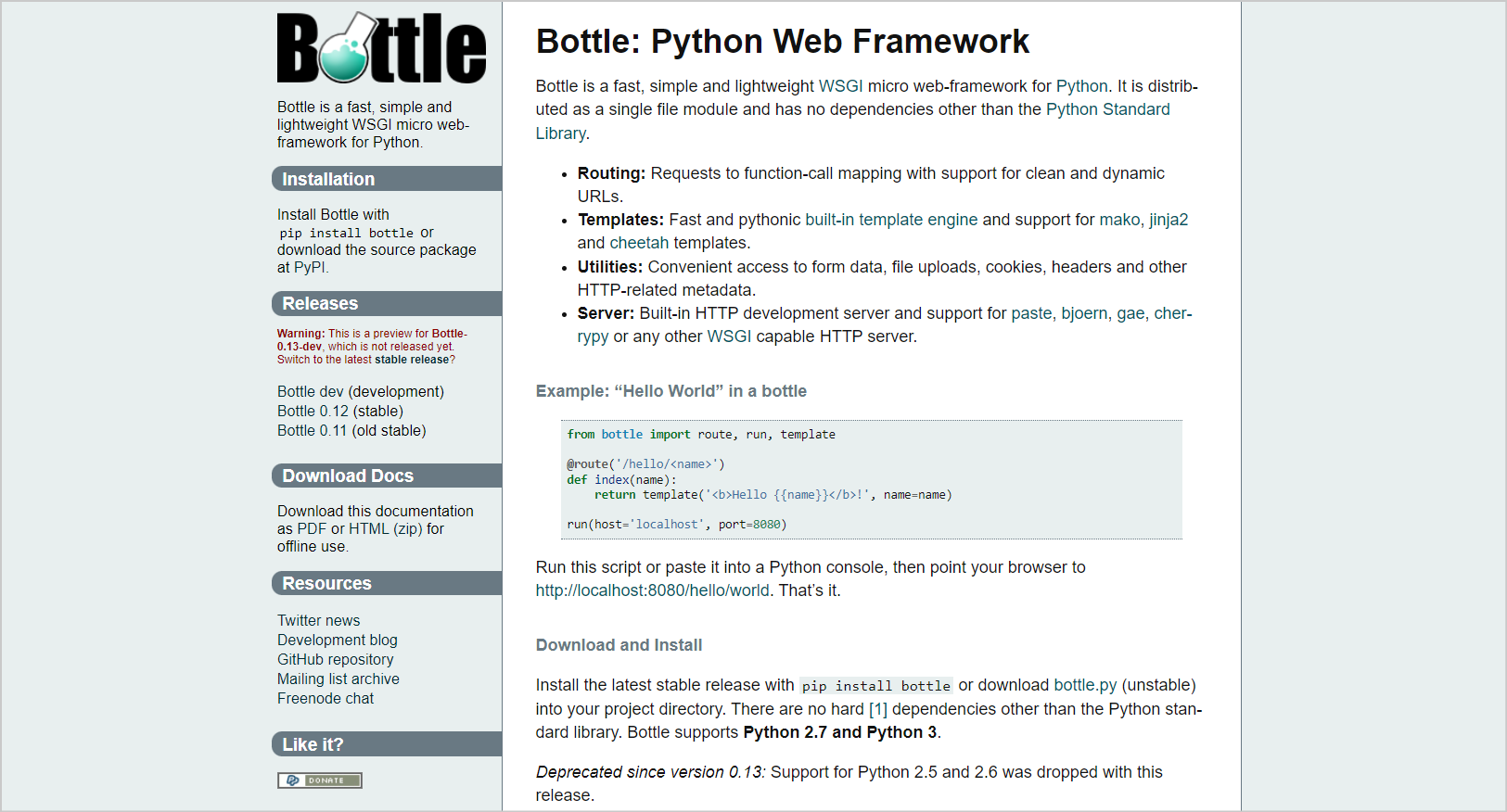
Bottle is another popular microframework built for Python, and is a great framework to use when you want to prototype ideas. Using a tool like Django for prototyping is messier because of its Model-View-Template structure. Bottle is the preferred tool for programmers who don’t care about the long-term code structure of a prototype.
This is also a great framework if you’re new to frameworks and want to know how they work. Bottle’s entire framework is contained within a single source file, so it’s easy to read the code and follow the logical flow of the program.
Bottle is compliant with the Web Server Gateway Interface (WSGI) standard, meaning that the scalability and flexibility that come with the WSGI interface are also available to you when you build applications using Bottle.
Features
- Bottle is easily deployed. All you need to do is have the Python Standard Library installed. There are no further configurations required to get Bottle up and running.
- The framework has a built-in template engine that makes rendering data on the server side a breeze. Bottle comes with support for cheetah, mako, and jinja 2.
- Accessing all HTTP-related data is simple when you’re building applications in Bottle. Data from headers, forms, uploads, and other sources are routed conveniently to bottle.py.
Applications
- A simple version of Pastebin called Pasttle was made with Bottle.
- A library called Decanter can add further structure to the applications you build in Bottle.
Grok
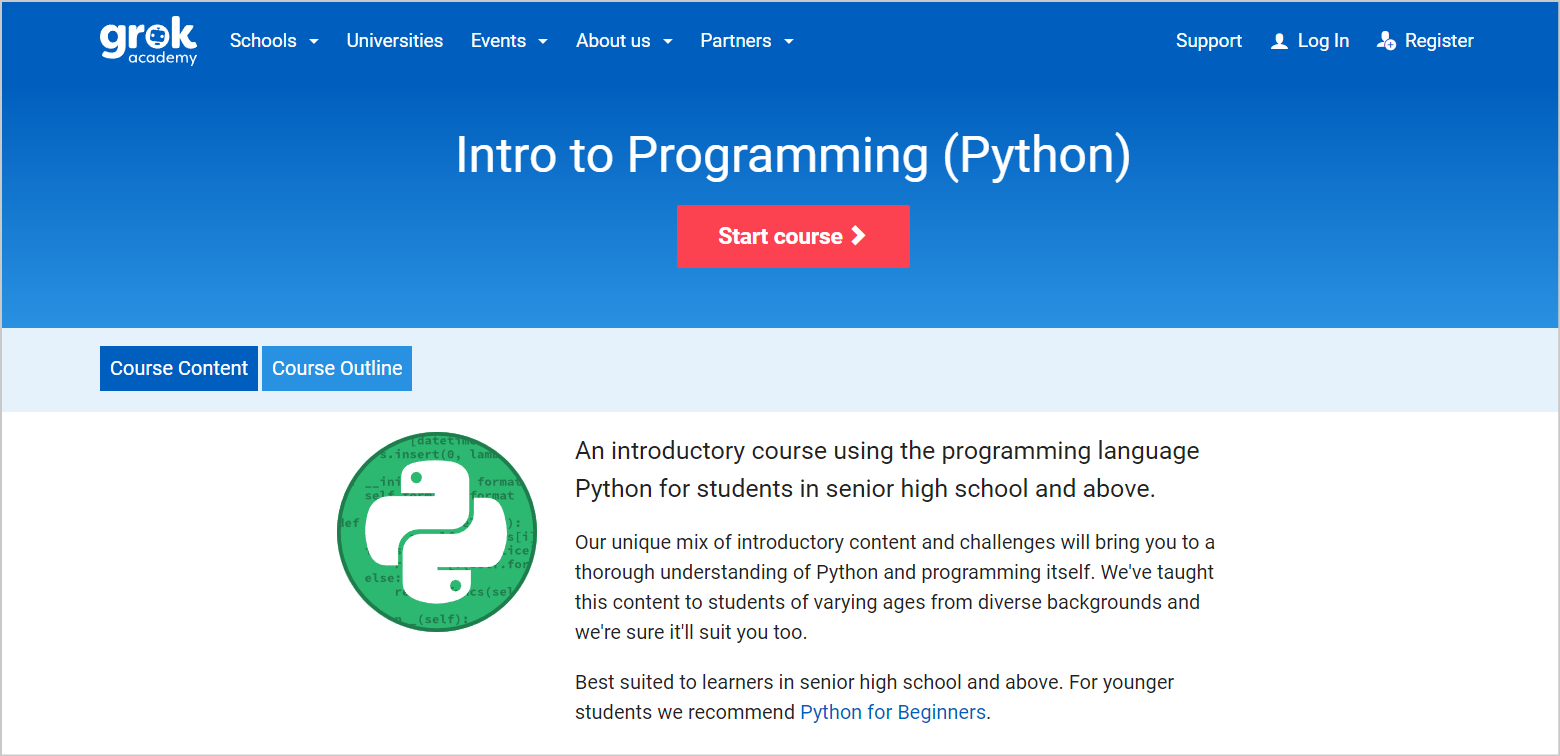
To understand what Grok is, you first need a quick primer on the Zope family of applications. Zope is a platform that offers free, open-source web application servers. These servers are written in Python and are the first to use the object publishing methodology.
Grok is a programmer-friendly framework that you can use to tap into the Zope toolkit. The goal of Grok is to make it easy to build web servers using the approach laid down by Zope. This is achieved with accessible syntax and a convention-over-configuration approach. The latter reduces the number of decisions a programmer has to take while writing code, therefore increasing the speed of producing a program.
Features
- Grok is very beginner-friendly. It’s one of the frameworks that is recommended to developers who are new to building applications using Python frameworks. The syntax is easy to understand, and you don’t have to configure a lot of components before getting started.
- This framework is aligned with the agile development methodology. That means that the framework is geared towards feature-driven development that is both fast and secure.
- You can access a whole host of built-in libraries and modules when you work with Grok. That means that everything from object databases to data input forms can be generated with just a few clicks.
Applications
- Grok can be used to build a variety of web applications with a strong web server component.
- Zope has a content management system called Plone, which can help you build custom content management systems.
- You can view some of the other projects built using Grok here.
Dash
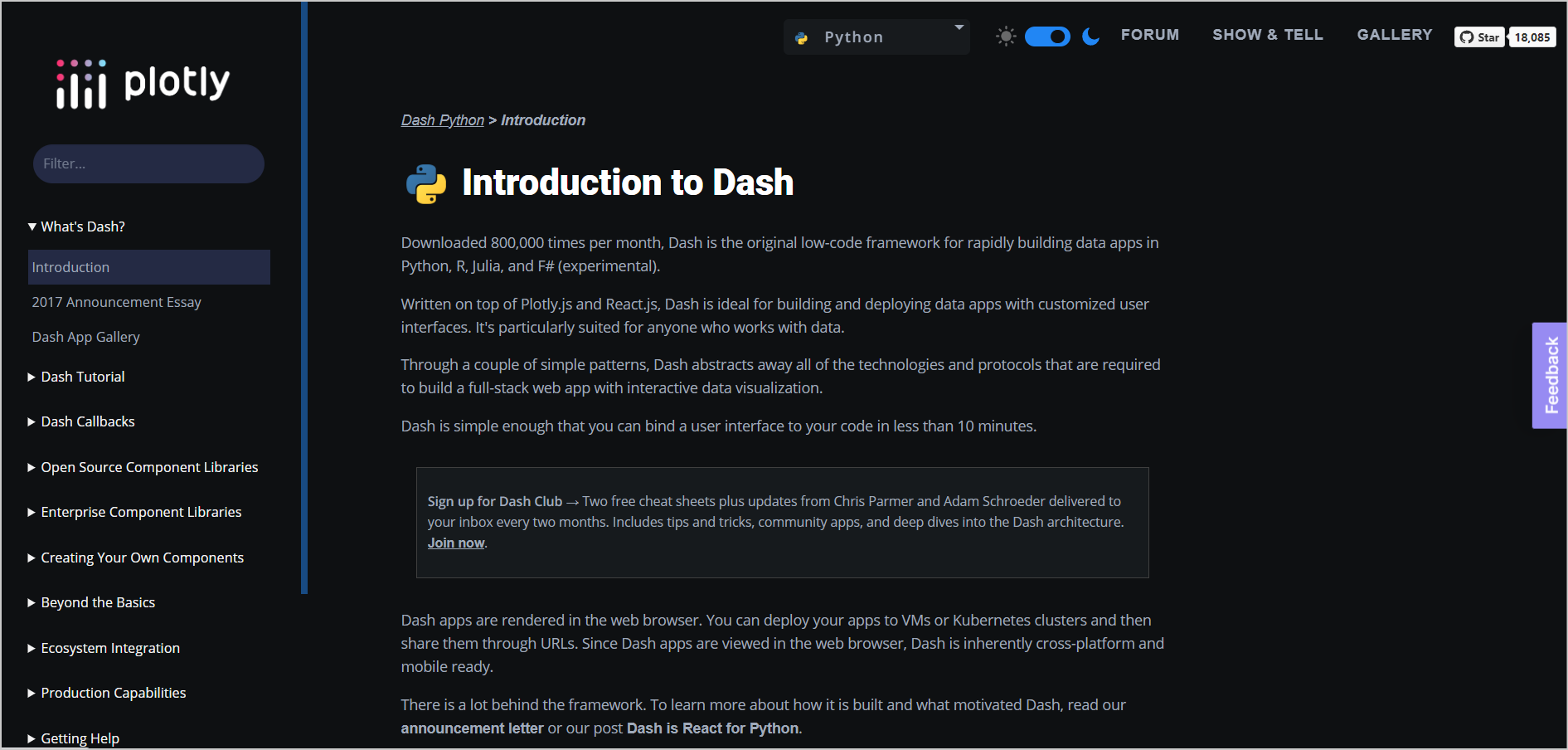
The no-code/low-code movement has gathered steam over the last few years. Dash is one of the firsts in the space thanks to its low-code approach to rap application development in Python.
Dash is a wildly popular framework that is downloaded over 800,000 times every month. The tool’s popularity is owed to its ability to simplify the creation of data-driven applications that have vibrant user interfaces.
Features
- The applications that you can build with Dash are mobile-friendly right out of the box. This is because the apps are rendered and viewed directly in the web browsers. So you don’t have to worry about the specific platform on which your app is going to be served up.
- Dash is built on top of react.js and plotly.js. So if you already know how to use React, you’re well on your way to building apps on the Dash framework.
- The framework uses the Plotly library for data visualizations. You can tap into the library to transform raw numbers into beautiful visualizations that can be viewed on any web browser.
Applications
- Communicating insights using data is increasingly becoming key for public institutions and private organizations in industries such as health and finance. Developers often turn to Dash when they need to build visualizations that make it easy to interpret data.
- You can view some of the other applications built using Dash here.
Masonite
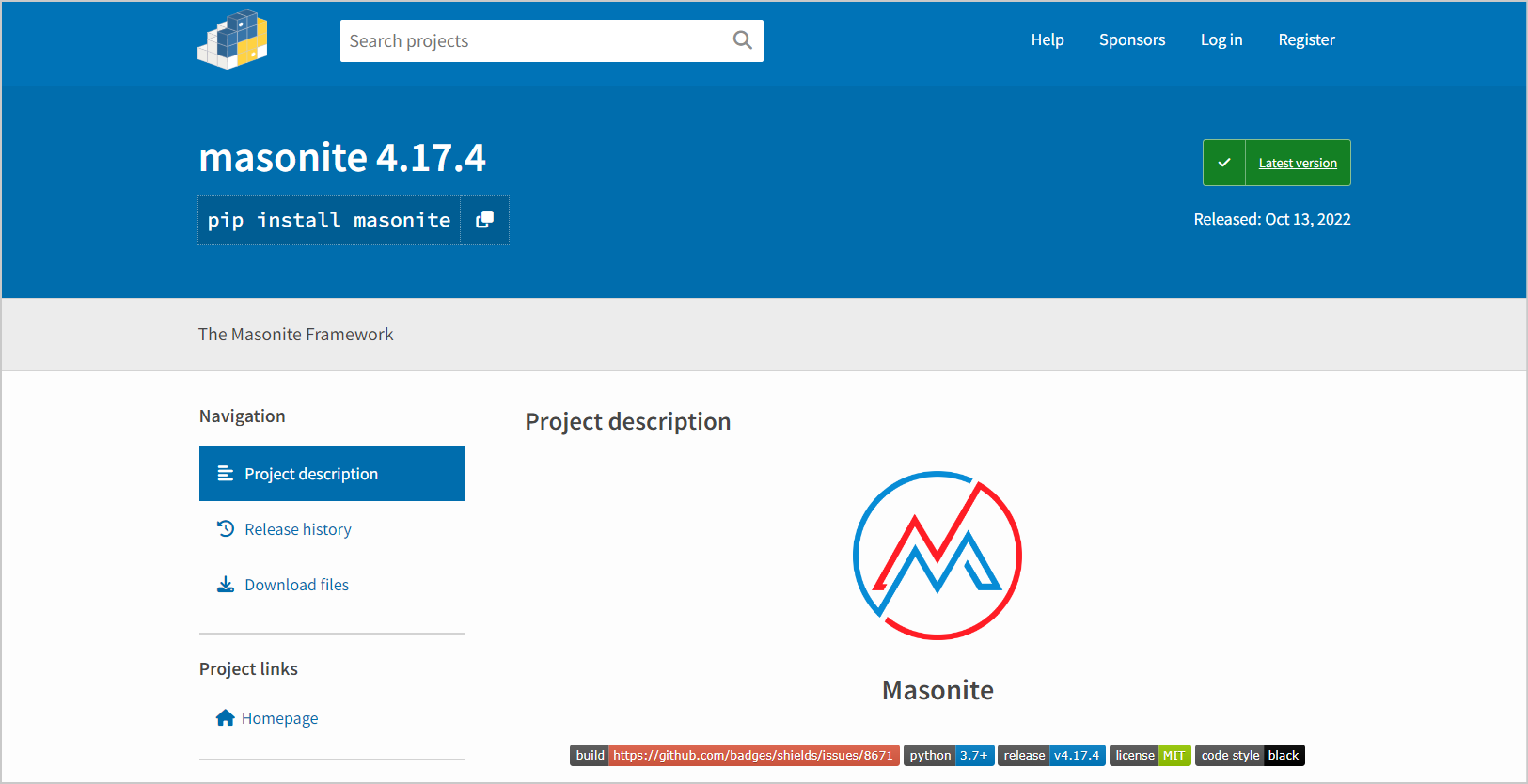
Masonite is a Python framework that’s popular among both novice programmers and advanced code junkies working on complex applications. This is because the framework is highly versatile. It can be lightweight and easy to configure if that’s all you need, but it can also be used to develop heavy-duty applications with a lot of different components.
Another reason Masonite is widely used is because of its large community. You can turn to everything from Slack channels to YouTube videos if you need to figure something out in the ecosystem. Being able to get help fast contributes to being able to build programs quickly.
Features
- This framework makes use of the model-view-controller (MVC) methodology, which is popular across programming languages. If you’ve already used an MVC language or framework before, then it’s simple to dive into Masonite and figure out the logical structure that your apps need to have.
- Masonite supports the use of queues. That means that jobs within your programs can be queued and run asynchronously, which makes apps built using Masonite fast, even when working on multiple tasks at the same time.
- Masonite offers built-in support for creating notification systems. This ensures that you can create apps that communicate with users regularly based on certain event triggers. The framework also comes with mail support if you would rather trigger emails than notifications.
Applications
- Masonite can be used to build data-driven apps quickly. Weather apps are one such example.
- You can customize Masonite to run on Docker if you want to take the container-based approach to building applications.
Get To Know Other Data Science Students
Jasmine Kyung
Senior Operations Engineer at Raytheon Technologies
Mengqin (Cassie) Gong
Data Scientist at Whatsapp
Jonathan Orr
Data Scientist at Carlisle & Company
How To Choose a Python Framework
As we’ve just seen, there is a slew of Python frameworks at your disposal. It’s not always easy to figure out the right one for your projects. Let’s take a look at a few common use cases and see which Python frameworks are the best for each of those situations.
What Are the Best Python Frameworks for Web Development?
The following are the best frameworks to use if you’re building web applications with Python:
- Django
- Web2py
- Flask
- CherryPy
What Are the Best Python Frameworks for Machine Learning?
Python is one of the most common choices for building machine learning algorithms. Here are the best frameworks for that purpose:
- PyTorch
- Keras
- Scikit
- NumPy
What Are the Best Python Frameworks for Automation?
The following are the best Python frameworks to use if you’re looking to automate testing or other tasks:
- PyTest
- Lettuce
- Behave
- DocTest
What Are the Best Python Frameworks for Software Development?
These frameworks are best to use if you’re looking to build small or enterprise-level software applications using Python:
- Django
- Bottle
- Flask
- Masonite
FAQs About Python Frameworks
We’ve got the answers to your most frequently asked questions.
What Is the Easiest Python Framework To Use?
There are certain Python frameworks that are easy to use because of their simple configuration and low-code approach. Grok and Web2py are two such examples. Bottle is also a good framework to learn first, as you can read its entire source code in a single file and gain an idea of how Python frameworks achieve what they do.
Should I Learn Django or Flask First?
Both Django and Flask are great frameworks for building applications with Python. Flask is a better choice if you’re a complete beginner and want to build simple projects or prototypes. Django is a more powerful framework and one that’s better to advance to after you have some experience with simpler Python frameworks.
What Is the Difference Between Python and a Python Framework?
Python is a programming language that you can use to build a whole variety of applications. Python frameworks are tools that make it easier to build apps with Python by providing various modules and libraries for programmers to use.
Since you’re here…Are you a future data scientist? Investigate with our free guide to what a data scientist actually does. When you’re ready to build a CV that will make hiring managers melt, join our Data Science Bootcamp that guarantees a job or your tuition back!




